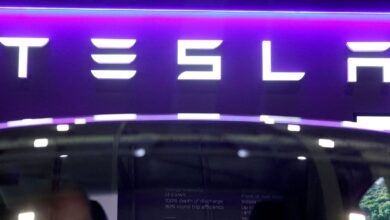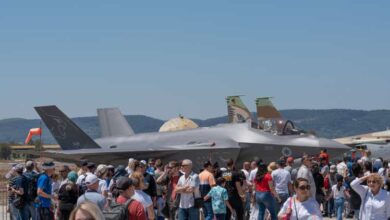3 ways a ‘Magnificent Seven’ stock-market bubble could burst

Megacap technology shares remain in the driver’s seat as the stock market extends a narrowly led bull run into 2024, leading to an intensifying debate over whether the rally carries echoes of the 1990s tech bubble.
“The ‘Magnificent Seven’ continue to drive U.S. equities higher, pushing index concentration to record levels. A reversal in their fortunes could weigh heavily on the overall market,” Daniel Grosvenor, director of equity strategy at Oxford Economics, said in a Monday note.
Counterpoint: Stock-market investors fear a megacap meltdown. Here’s what history says.
The so-called Magnificent Seven — Nvidia Corp.
NVDA
,
Alphabet Inc.
GOOG
GOOGL
,
Amazon.com Inc.
AMZN
,
Apple Inc.
AAPL
,
Tesla Inc.
TSLA
,
Meta Platforms Inc.
META
and Microsoft Corp.
MSFT
— captured investors’ attention and dominated returns in 2023 on expectations they would be the biggest beneficiaries of an artificial-intelligence boom. In 2024, Apple (down 6.2% year to date) and Tesla (down nearly 33%) have stumbled, while leadership of the overall stock-market rally has grown only more concentrated.
So how concentrated is the market? Grosvenor noted that after beating the broader S&P 500
SPX
benchmark by almost 30% in 2023, the top 10 constituents of the index have outperformed by another 3% so far in 2024. Superior earnings growth over the past year has underpinned the megacap top performers, who have seen momentum largely continue in 2024.
The top 10 now make up 32% of total S&P 500 market capitalization, around 6 percentage points higher than the weight of the top-10 stocks at the peak of the 1990s dot-com bubble, Grosvenor observed (see chart below).
The bulk of the top 10 is accounted for by the Magnificent Seven, though Eli Lilly & Co.
LLY
recently surpassed Tesla’s market cap, Grosvenor noted, warning that the dominance of such a small number of companies and the high degree of correlation between them reduces the benefits of index diversification and means a downturn in their fortunes could weigh heavily on the overall market.
Moreover, he noted a tendency for index concentration to revert to the mean, though the relationship appears “relatively weak over a short time horizon” and requires a catalyst to spark the reversal.
So where might that catalyst come from? Grosvenor laid out some possible candidates:
Earnings expectations
While the megacap companies continue to see strong earnings growth overall, widening the gap with the rest of the market, it will likely prove harder for them to beat analysts’ expectations this year, Grosvenor said.
After easily topping last year’s expectations for 10% earnings growth, the Magnificent Seven are expected to deliver a further 22% rise in 2024 on the assumption profit margins will move to a record high. The analyst is skeptical, arguing that while AI advances might help further boost profitability in the medium term, a lot of upside already appears baked in.
“This leaves room for disappointment,” Grosvenor wrote, noting that history suggests it takes a long time to see the benefits of technological change and that there’s no guarantee “these particular companies will be the ultimate winners.”
Related: AI hype around ‘Magnificent 7’ stocks is latest example of ‘big market delusion’
Stretched valuations vs. rising bond yields
Grosvenor argued that valuations for the Magnificent Seven are looking stretched again, with the group now trading at an average 12-month forward price-to-earnings ratio of 29, compared with 16 for the rest of the S&P 500 — well above the decade average and now topping its postpandemic average.
That’s happened despite bond yields being well above their average, something which tends to weigh on stocks whose lofty valuations are based on expectations for earnings far into the future. That makes this part of the market vulnerable to a correction if inflation proves stickier than expected and bond yields continue to rise in the near term, he argued.
Grosvenor noted that the Magnificant Seven underperformed alongside the initial sharp jump in Treasury yields in 2022 and struggled to beat the wider market in the third quarter of last year when yields spiked, despite their strong earnings performance.
Policy uncertainty
A contentious U.S. presidential election also looms in November, heightening the prospect of “policy uncertainty” that could be particularly unsettling to the high-flying stocks.
Grosvenor notes the tech sector remains under the spotlight from an antitrust perspective, which will likely be a key campaign emphasis for Democrats on the campaign trail.
The Magnificent Seven could also be exposed to an increase in uncertainty over trade policy, he said, noting that as a group they generate a much higher proportion of their revenues outside of the U.S. than the broader S&P 500. They also have meaningful exposure to China and Taiwan and, in recent years, their relative returns have had a negative correlation with measures of trade uncertainty (see chart above).
Don’t miss: Nvidia’s earnings report could kill the momentum driving U.S. stocks higher, regardless of how it turns out.




